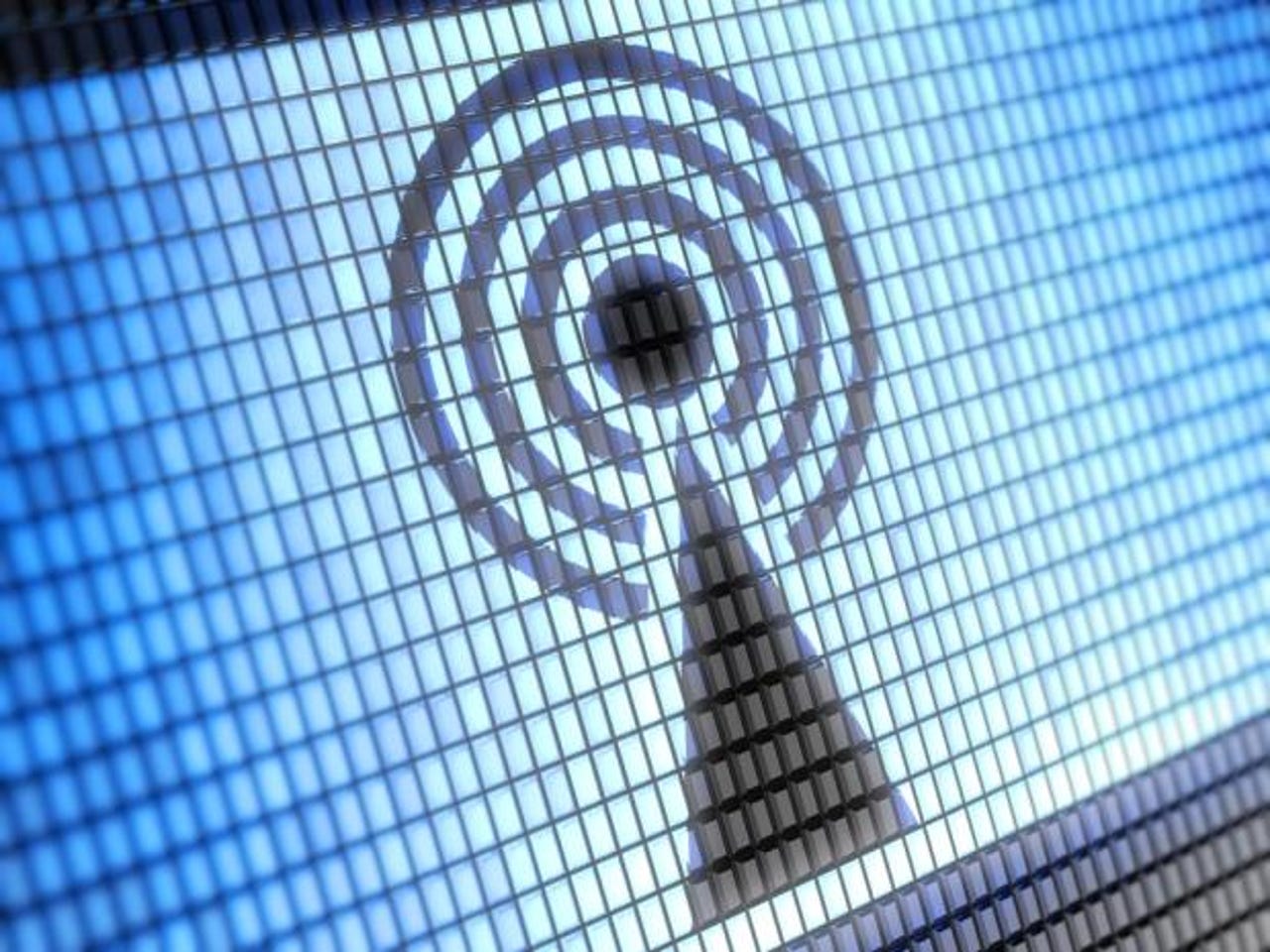Next-gen Wi-Fi could end the battle for office bandwidth

The Wi-Fi Alliance is getting set to certify products for 5GHz and 60GHz Wi-Fi, which it says will deliver gigabit-speed connectivity in homes and businesses — and even provide a completely wireless workplace.
"Imagine coming into your office in the morning, booting up your laptop and all of a sudden your three HD screens turn on, your wireless keyboard, your wireless mouse," says Edgar Figueroa, CEO of the Wi-Fi Alliance.

The trade group, which counts Apple, Microsoft and RIM among its members, is gearing up to launch a certification programme for 802.11ac, a new standard for wireless networks in the 5GHz frequency. This will have capacity for 80MHz and even 160MHz channels, compared with the 40MHz channels used in its predecessor, 802.11n. This should add up to speeds of around 1 gigabit per second, used in more powerful devices.
READ THIS: Tech Guide: Next-generation 802.11ac Wi-Fi
"This is a pretty big pipe that we're providing for connections," Figueroa explains.
The ratification of 802.11ac (5G Wi-Fi) is expected in early 2013. Beyond that is another forthcoming standard, 802.11ad, which operates in the 60GHz range and promises speeds of 6 to 7 gigabits per second.
"This is a new frequency domain, so the physical characteristics of the link will be different," Figueroa says. "There'll be another radio in your device that will operate at 60GHz. That's available in a lot of the world, and sometimes you can get up to 2GHz of spectrum that's available for connections.
"And since it's an in-room application only, it doesn't penetrate walls, you can use the full available spectrum to push a lot of data through that."
In effect, 60GHz Wi-Fi will let people stream uncompressed HD video to multiple devices in the same space — no more scrapping over Wi-Fi bandwidth in crowded rooms. But its uses don't end there: 'kiosk applications' could let people stop off at a stand and download a full HD film prior to boarding a plane, for example.
These new Wi-Fi technologies could also have an impact in the business domain, where the bring-your-own-device (BYOD) trend means more and more employees are using their own consumer devices to work. In particular, the use of 802.11ad should help with faster access to cloud-based resources, faster backups and better video streaming.
"Many folks are interested in... enabling 60GHz for network storage, which would mean instant backups, just taking a few seconds to back up what essentially would be a full hard drive," Figueroa points out.
Adventures in 60GHz
While there have been efforts in the 60GHz spectrum before, the Wi-Fi Alliance believes the technology is now ready for the market. Moreover, because 11ac and 11ad work at different frequencies, "they can elegantly operate simultaneously", Figueroa says. "So at the same time you might have a 5GHz connection to your network, and a 60GHz connection to your peripherals", such as wireless dock or keyboard.
"It's likely that in the next two to three years we'll have more devices that are Wi-Fi enabled than people in the world"
In a panel session at the Interop conference in New York last week, Mark Hamilton, CTO of Polycom's SpectraLink, described 60GHz Wi-Fi as "low-hanging fruit" — that is, "well-understood technology".
"One of the easiest ways to improve speed is to improve bandwidth," he said, pointing out that having 2GHz channels will do this.
"60GHz is also really highly directional — it's very focused. This allows a great amount of spectrum use," he added.
Highly directional antennas make the focus of the signal just a few degrees, which means you could have lots of 60GHz Wi-Fi devices very close to each other using the same spectrum, but not interfering with each other.
The Wi-Fi Alliance expects to launch its certification programme for 11ac products in the first half of 2013 (products are already on the market); 11ad is a little further out, as the certification scheme is still in development. As for the power demands of these new technologies, Figueroa gives a politician's answer: it depends on which bits of the protocols are implemented in a given product, he says.
"You could get better [power] efficiency with some of these higher frequency radios," he points out. "So it just really depends on the implementation, on the product, on the application and how you're measuring it."
M2M
Power consumption will remain an issue, of course, as Wi-Fi finds its way into an ever-increasing array of devices, small and large. Some two billion devices are already Wi-Fi enabled — and the number is soaring.
"It's likely that in the next two to three years we'll have more devices that are Wi-Fi enabled than people in the world," Figueroa predicts.
"We have certified door locks, medical devices, and devices that go into the loo, for measuring and metering and such like"
This connected world — coupled with the BYOD trend — was very much on the mind of speakers at Interop. With everything from phones, trains and car parks becoming networked, "it's a very different landscape for all of us", Cisco's Doug Merrit said in a keynote. Machine to machine communication (M2M), or the 'internet of things', will see devices from smart meters to fridges coming online. "The explosion of data that we need to analyse is just going through the roof," IBM's Ric Telford added.
"We've already certified refrigerators that have Wi-Fi, so we're on to the next stage," Figueroa continues. "We are seeing very interesting devices like heating and air-conditioning systems that are Wi-Fi certified. We have certified door locks, medical devices, and devices that go into the loo, for measuring and metering and such like."
Voice over Wi-Fi
In May, the Wi-Fi Alliance announced it would begin certifying products for its Voice Enterprise program — in effect, a voice-over-Wi-Fi system that lets people phone each other without using a cellular network. The signal is handed off from one access to point to another within a defined space, for example, on a campus or business premises.
"We expect that the popularity of voice over wireless should increase over the next few years," Figueroa says. "It's an application that can be used when people are mobile, in an elevator or going across a campus while on one call."
The Alliance says it has done a lot of work to ensure that the connection is secure and doesn't drop out mid-conversation.
And while it seems like the group is moving into an area traditionally dominated by the mobile operators, Figueroa insists there's no rivalry. He points out that around 50 mobile companies worldwide are members of the Alliance, and operators themselves are getting into Wi-Fi in a big way. Indeed, in the UK alone, O2, BT and Virgin Media — among others — have all dabbled in public Wi-Fi networks.
"They realise that the premium applications are those bandwidth-hungry applications like video, gaming and location-based services, so they're very eager to exploit the benefits of Wi-Fi," Figueroa says.
In addition, shortage of spectrum means that mobile operators have to look at other channels. "Eventually it becomes a real capacity concern. That problem is not one you can solve without looking at solutions like Wi-Fi," he argues.
In September, the Wi-Fi Alliance launched Miracast, a standard for instantly transmitting video and images from one device to another. And Figueroa is also talking up Wi-Fi Direct, which allows devices to connect to each other without a network being present.
"People today want to be connected and enjoy the freedom that wireless provides," Figueroa concludes. "We are just beginning to touch the surface of what they'll be able to do with connected devices."